PUNCHES WERE THROWN
Rabbi Samuel Benjamin — from my synagogue — was arrested by the cops and beat up by congregants. Then he got fired. He went off to Jerusalem.
He resurfaced stateside in Jacksonville, Florida.
This was in 1926. Rabbi Benjamin fought the great Conservative-Orthodox civil war at the Cleveland Jewish Center, East 105th Street, in the early 1920s.
Rabbi Benjamin oversaw the construction of a huge new sanctuary, complete with a swimming pool, and was supposed to keep the shul Orthodox. He tried. But the Conservatives wanted him out. Punches were thrown. One of the punchers was a certain Philip Rocker. Check it out.* The rabbi left town.
The Cleveland Jewish Center, aka the “Polish synagogue,” aka Anshe Emeth Beth Tefilo, stayed at East 105th Street for a couple decades, then moved to a park-like setting in Cleveland Heights.
I belong to the Heights shul — Park Synagogue. I do not see any signs of civil war. Very few congregants know about Rabbi Benjamin.
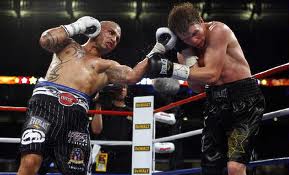 Rabbis don’t get in fights like they used to, either. Does any rabbi don boxing trunks with the Jewish star? I think there is a Russian rabbi in New York who does. [Yes, Yuri Foreman. Photo: Foreman taking a punch from Miguel Cotto.]
Rabbis don’t get in fights like they used to, either. Does any rabbi don boxing trunks with the Jewish star? I think there is a Russian rabbi in New York who does. [Yes, Yuri Foreman. Photo: Foreman taking a punch from Miguel Cotto.]
My rabbi doesn’t fight — my guess. If he does, he’s a welterweight. He’s not big.
Some rabbis play basketball. Several Cleveland rabbis played an exhibition basketball game at the Cleveland Cavaliers pre-game this month. There was no score in ten minutes.
Next year for the pre-game, the rabbis should reenact the Conservative-Orthodox civil war of 1921.
—
* “Near [Rabbi Benjamin’s] house was Philip Rocker, son of Samuel Rocker of The Jewish World. He waited for the rabbi and when he saw him he attacked him and beat him up quite severely.” From Jewish Life in Cleveland in the 1920s and 1930s by Leon Wiesenfeld, 1965.
—
SIDE B
Jumping ahead about 90 years . . .
THE JEWISH WEDDING BAND WARS, 2009
The Orthodox Jewish (OJ) music scene is centered in New York City, where most of the OJ gigs are.
An OJ band not based in New York is called an “out of town” band, even if the band plays its own hometown. There are a couple home-grown “out of town” OJ bands in Cleveland.
The Barry Cik Orchestra dominated the Orthodox Jewish Cleveland music scene in the 1980s. Cik had yikhes (lineage), coming from a long line of distinguished Hungarian musicians. I played a couple gigs with him. His talented son Yehuda became an Ortho pop star.
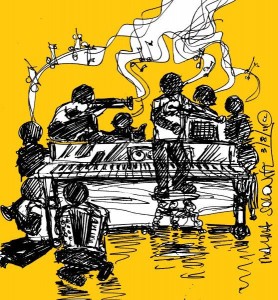 Barry Cik was superseded in Cleveland by the Kol Simcha Orchestra in the 1990s. Some bridal couples perceived Cik as not being frum (religiously observant) enough. The Orthodox world, in general, was becoming increasingly more ritually observant.
Barry Cik was superseded in Cleveland by the Kol Simcha Orchestra in the 1990s. Some bridal couples perceived Cik as not being frum (religiously observant) enough. The Orthodox world, in general, was becoming increasingly more ritually observant.
Cik placed an ad in the Cleveland Jewish Times (no longer in existence) in 1991 that read in part: “I am as scrupulous in shimras Shabbos [guarding the Sabbath] as I can be, and I don’t believe that I’m any less Shomer Shabbos [Sabbath-observant] than most anybody else.”
Cik sometimes played for non-Orthodox Jewish simchas (celebrations) with mixed dancing — men and women dancing together. Kol Simcha — the new band– typically didn’t play for mixed dancing. Kol Simcha picked up a chunk of Cik’s frummer gigs.
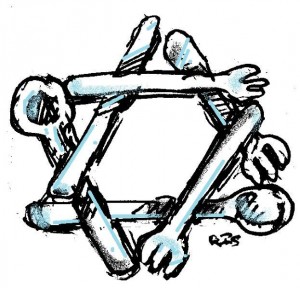 Kol Simcha’s drummer got in trouble for using treyf (non-kosher) meat at his kosher Chinese restaurant, so he left town. Still, Kol Simcha — the band — stayed in business. The lead singer, Rabbi Simcha Mann, was a very good singer.
Kol Simcha’s drummer got in trouble for using treyf (non-kosher) meat at his kosher Chinese restaurant, so he left town. Still, Kol Simcha — the band — stayed in business. The lead singer, Rabbi Simcha Mann, was a very good singer.
Several years later Simcha Mann’s expert keyboard player, Yosef Greenberger, put together a one-man band, which cut into Kol Simcha’s full-band wedding business.
Simcha Mann and Yosef Greenberger took their dispute to an unofficial beis din (house of judgment), where three rabbis decided Greenberger could keep his one-band and Rabbi Mann could have the full-band scene. The two musicians agreed not to cut into each other’s turf.
This ruling held for 13 years, 1996 to 2009.
In 2009 Greenberger and Mann remembered the ruling differently. Greenberger recalled the rabbis saying the ruling was void if new competition came to town. Greenberger’s Jewish-law counsel, his toyan, backed him up in writing. Mann disagreed.
New bands were playing Cleveland. Yosef expanded to a full band. Orthodox bands from Columbus, Ohio, and Detroit came through. A young Orthodox musician started a new Cleveland Ortho band.
Yiddishe Cup joined the fray! But Yiddishe Cup had three major flaws:
1. Yikhes (lineage/pedigree). We had none.
2. We didn’t know the OJ repertoire very well.
3. Yiddishe Cup’s name was unorthodox.
For Ortho purposes, Yiddishe Cup became Shir Perfection. (Shir is Hebrew for song.) We had an Ortho singer who knew all the Ortho tunes. We held a couple rehearsals. These get-togethers were secretly called Project O. (‘O” for Orthodox.) One musician called our project “Project Zero”; he didn’t like OrthoRock music and dropped out.
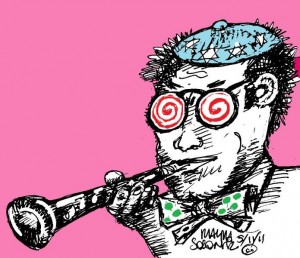 We didn’t get any gigs. We thought we might get a couple. For instance, Yiddishe Cup once played an OJ wedding for the daughter of an Orthodox blues harmonica player. The dad, who didn’t blow on shabbes, sat in with us.
We didn’t get any gigs. We thought we might get a couple. For instance, Yiddishe Cup once played an OJ wedding for the daughter of an Orthodox blues harmonica player. The dad, who didn’t blow on shabbes, sat in with us.
We were looking for Ortho gigs like that.
Still looking.
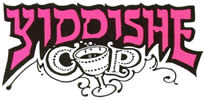
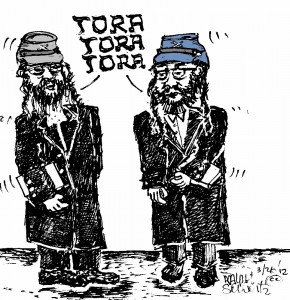
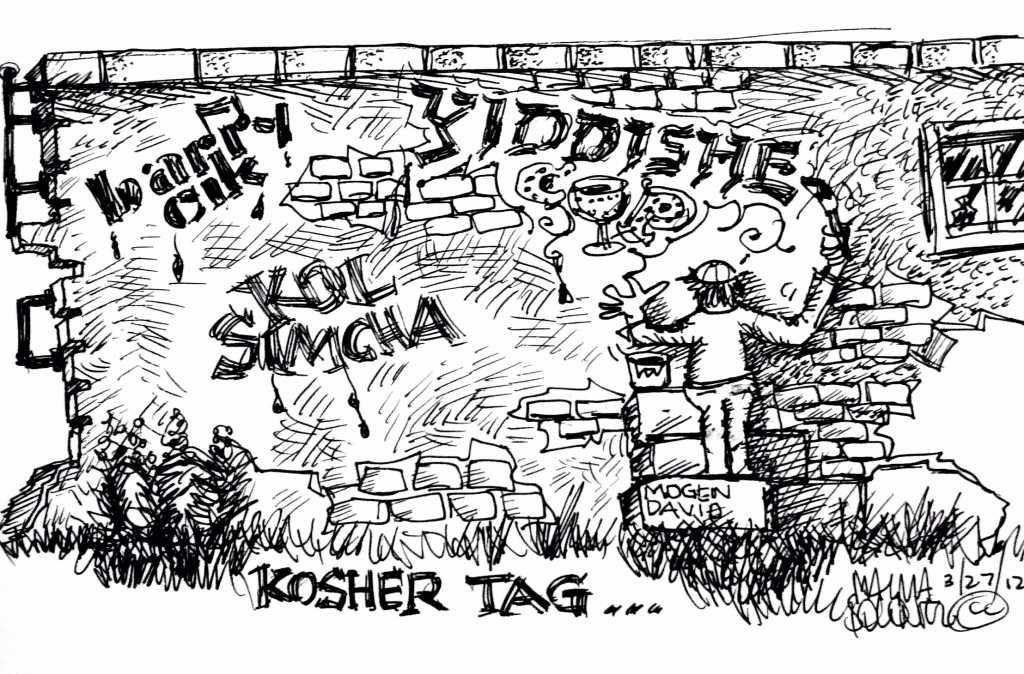
11 comments
I can testify some rabbis still get into fights. We witnessed it last year at the Maltz Museum, around Purim-time, when about five of ’em fought it out for the judges and attendees to vote whose humor they thought was the funniest. Some of these guys duked it out to the hilt. Then there’s always the major competition between the “latke” and “the “hamentash”…. (they did it at Park a few times)
Great reminisces.
They may not engage in fisticuffs, but I have a shellfish-eating friend who has dealt with Orthodox leaders on community issues.
There is often an amazing amount of antagonism over the ‘right’ way to be observant, and they don’t mind who knows.
Pretty silly, if you ask me.
I went to a boxing match and shul broke out.
I sent this to Aaron, who has mentioned the Cleveland Jewish Center of this period on many an occasion. He mentioned you got some of the facts wrong, which I could share at another time, and wondered what you meant by referring to Park as “the Heights shul.” I couldn’t come up with an answer either.
To Kenny G:
If I got some facts wrong, please let me know.
Just give me the three worst errors. I don’t have all day.
Okay, okay….
Three only:
a. Wrong rabbi responsible for “changing” the synagogue. It was Rabbi Goldman.
b. Rabbi didn’t take the first punch.
c. Local Orthodox in that era wouldn’t have resembled illustration.
Incidentally, talk tonite at Siegel has much potential – i.e. “Fashioning Jews on the Screen” – the way Jews have been portrayed in dress in films and on television….
‘Hope to go, if possible.
To Kenny G.
Thanks for the correction.
a. I have changed several lines in “Punches were Thrown” to reflect the following: Rabbi Benjamin wanted the shul to stay Orthodox, not go Conservative. (I had it backwards in the original post.) Benjamin was a Conservative-ordained rabbi but leaned Orthodox. Rabbi Solomon Goldman, an outspoken Conservative, was the next rabbi. (He’s not in my story.) Rabbi Goldman caught flak from the Orthodox contingent.
b. I stand by original reporting. (Always wanted to write that line. Thank you, blog.) Sue me. My source is Leon Wiesenfeld’s book Jewish Life in Cleveland in the 1920s and 1930s.
c. My illustrator, Ralph Solonitz,needs to time-travel to the 1920s more often.
Thanks. And significance of “the Heights shul?”
To Kenny G:
The Heights Shul = Park Synagogue. Park is the shteibl with the dome on Mayfield Road.
Yeah, I’m way off.
Park needs more matzo-ball air fresheners in its social hall to qualify as a true “Heights shul.”
I could have said “Cleveland Heights synagogue,” I guess. That would have been clearer. But a bit too clear.
Here’s the offending section of the post:
“The Cleveland Jewish Center, aka the ‘Polish synagogue,’ aka Anshe Emeth Beth Tefilo, stayed at East 105th Street for a couple decades, then moved to a park-like setting in Cleveland Heights.
“I belong to the Heights shul — Park Synagogue. I do not see any signs of civil war. Very few congregants know about Rabbi Benjamin.”
No, the problem was the disregard with about half-a-dozen Orthodox synagogues remaining in Cleveland Heights, as well as Beth El – the Heights Temple, Sonny.
These are “committed,” with the general exception of “Taylor Road,” which could announce a merger any time now.
Uh-oh. Looks like a dance-off a-brewin’!!!
Leave a Comment